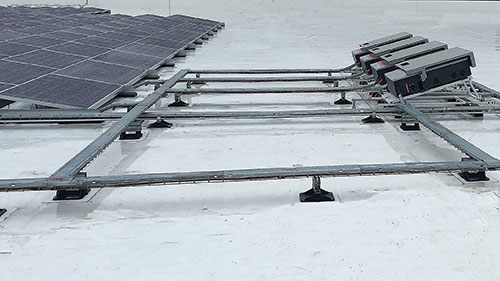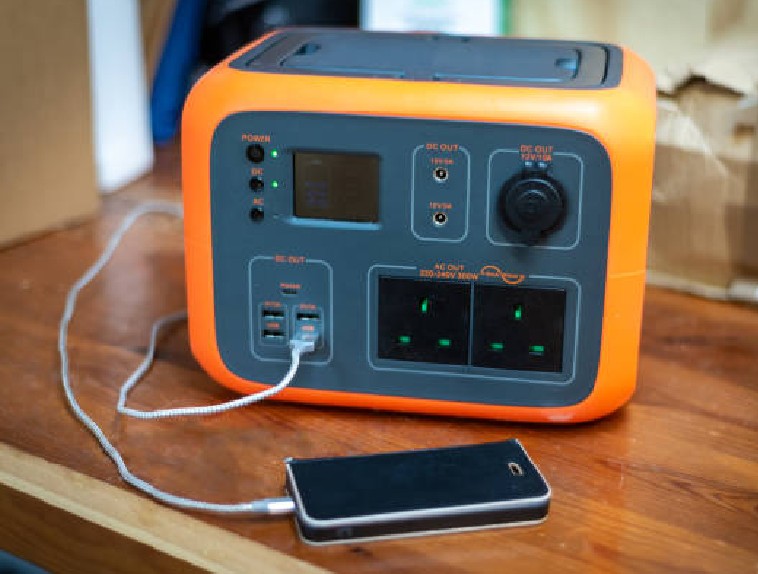Can utility interactive inverters installed within 10 feet of the PV array be a method of complying with the requirements of 2014 National Electrical Code Section 690.12?
This response is intended to promote safe installations that comply with the PV rapid shutdown requirements of the 2014 National Electrical Code (NEC) Section 690.12. If utility interactive inverters are installed to support PV rapid shutdown compliance, and the inverter is not specifically certified (listed) as either PV Rapid Shutdown System Equipment or part of a PV Rapid Shutdown System, additional considerations are needed to mitigate shock hazards. Note that information on equipment certified as PV Rapid Shutdown System Equipment or PV Rapid Shutdown Systems can be located by going to UL Product Spec at www.ul.com/productspec, click the link identified as “UL Product Category Code,” enter either “QIJW” for Photovoltaic Rapid Shutdown System Equipment or “QIJS” for Photovoltaic Rapid Shutdown Systems in the box and search.

Section 690.12 of the 2014 NEC requires that PV system circuits installed on or in buildings shall include a rapid shutdown function that controls specific conductors in accordance with 690.12(1) through (5).
(1) Requirements for controlled conductors shall apply only to PV system conductors of more than 1.5 m (5 ft) in length inside the building structure or more than 3 m (10 ft) outside the perimeter of a PV array.
(2) Controlled conductors shall be limited to not more than 30 volts and 240 volt-amperes within 10 seconds* of rapid shutdown initiation.
(3) Voltage and power shall be measured between any two conductors and between any conductor and ground.
(4) The rapid shutdown initiation methods shall be labeled in accordance with 690.56(B).
(5) Equipment that performs the rapid shutdown shall be listed and identified.
Once the controlled conductors exceed 1.5 m (5 ft) in length inside a building, or more than 3 m (10 ft) from a PV array as identified in NEC Section 690.12(1), the requirements of NEC Section 690.12(2) through (5) become a requirement. NEC Section 690.12(2) requires that the controlled conductors are not permitted to exceed 30 volts and 240 volt-amperes after 10 seconds* of the initiation of the PV rapid shutdown. If utility interactive inverters (due to the anti-islanding feature) are installed to address the requirements of NEC Section 690.12(2) and the inverter is not certified (listed) for rapid shutdown, there are some important considerations necessary to verify compliance and identify that it provides the rapid shutdown functionality. Inverters come in many different configurations; for example, some have isolation transformers between the DC and AC circuit while others only have semiconductor switches. It is very common for inverters to have DC input and AC output filters including some value of capacitance that varies from product to product. When the AC output circuit of a typical PV inverter is open circuited (this occurs when the AC disconnect is opened), the electrical load is removed from the inverter. With the AC disconnect opened, the utility interactive inverter is required to cease the export of output current and trip off line. However, in the absence of an electrical load, the voltage will typically rise sharply; the inverter output capacitor can be charged to a voltage higher than the normal AC grid voltage. Without a connected external load to bleed down the capacitive charge, the inverter’s AC output capacitors can maintain a voltage that exceeds 30 volts and 240 volt-amperes for a period of time longer than the 2014 NEC Section 690.12(2) permitted 10 seconds*. This charge may present a shock hazard to service personnel and first responders.
The current edition of UL 1741 (Standard for Inverters, Converters, Controllers and Interconnection System Equipment for Use with Distributed Energy Resources) has requirements mandating that input and output capacitors to be discharged over a period not exceeding 5 minutes to protect service personnel and requires a cautionary marking identifying there is a risk of electric shock. With that in mind, inverters (including micro inverters) certified to UL 1741 do not automatically assure that the output voltage complies with the 30 volts, 240 volt-amperes, within 10 seconds* as mandated by the 2014 NEC rapid shutdown requirement. It would be inaccurate and possibly dangerous to believe that all certified (listed) utility interactive inverters (including micro inverters) provide an inherent rapid shutdown feature, unless the inverter has been specifically evaluated and certified (listed) to provide a rapid shutdown function. Where the inverter is not specifically certified (listed) for rapid shutdown, the installer as well as the authority having jurisdiction (AHJ) would need to consider the particular inverter(s) functional ability, the electrical location of the AC disconnect, the presence or absence of any connected loads, and the effective discharge time. The presence or absence of connected loads will either expedite or delay the discharge of the inverter capacitors which may or may not limit the controlled conductors to the 30 volts, 240 volt-amperes, within 10 seconds* in accordance with the rapid shutdown requirement of the 2014 NEC. Where utility interactive inverters (including micro inverters) are not certified (listed) for rapid shutdown, compliance with the 2014 NEC Section 690.12(2) can be confirmed via other measures, such as a field verification test acceptable to the AHJ that demonstrates that the controlled conductors in the installation are limited to 30 volts, 240 volt-amperes, within 10 seconds* of initiating the PV rapid shutdown.
If there are questions about a particular UL certified (listed) inverter, UL will work with the AHJ and inverter manufacturer to determine product acceptability of a particular installation.
* 2014 NEC TIA (Tentative Interim Amendment) 14-10 modified NEC Section 690.12(2). This modification changed the rapid shutdown completion time from 10 seconds to 30 seconds. The substantiation for this TIA is that for certain utility-required grid-support functions of PV systems, the PV systems need to be capable of riding through a grid disturbance for periods up to 20 seconds. The time modification from 10 seconds to 30 seconds is also in line with the 2017 NEC requirements for PV rapid shutdown.











Find Us on Socials